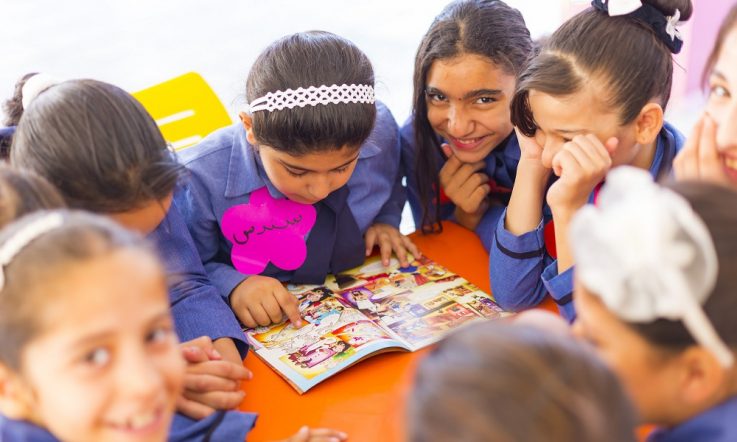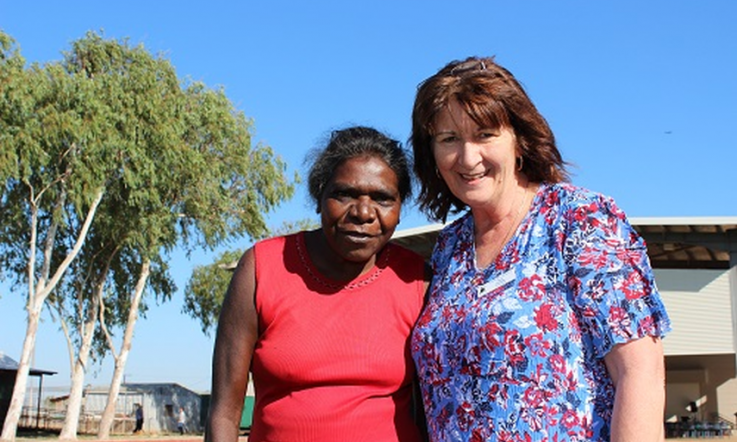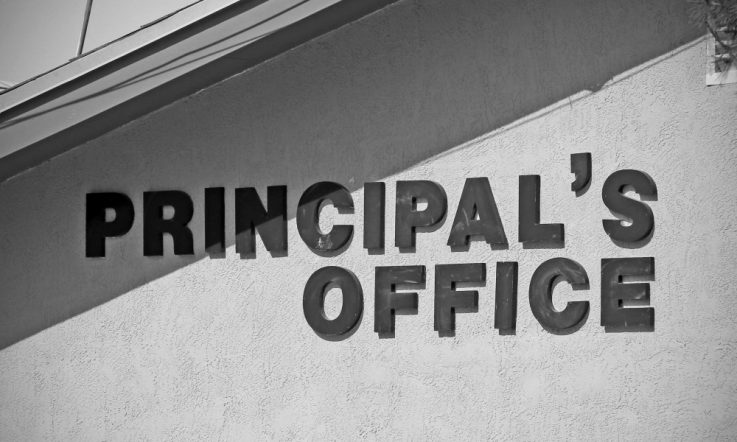This podcast from Teacher magazine is supported by Bank First. Bank First is proud to support the financial wellbeing and professional development of the education community. Visit bankfirst.com.au to find out how they can help you reach your financial goals.
Hello, and thank you for downloading this podcast from Teacher magazine. I'm Dominique Russell.
In this episode of Global Education, I'm joined on the line by Dr Louise van Rhyn from Cape Town, South Africa. She's the founder of a program named Partners for Possibility, which pairs business leaders with principals for a 12-month structured leadership development program. The program was recognised internationally after winning a WISE Award for innovative solutions to education challenges and their positive social impact.
Approximately 20 000 schools in South Africa, Dr van Rhyn says, are under-resourced, and their principals tend to be unequipped with essential support. They often find themselves being slowed down by dealing with unfamiliar financial and HR matters, when, at the same time, the 5000 well-functioning schools in the country tend to be supported by a network of people around them, who offer expertise in these organisational leadership tasks so they can spend more of their time concentrating on the students. Dr van Rhyn joins me on the line now to explain how Partners for Possibility is increasing the leadership capacity of school principals.
Louise van Rhyn: So I'm a home-comer. I returned to South Africa after living in the UK, and my background is organisational development and leadership development. So when I arrived back in South Africa I wanted to be part of trying to address some of these significant issues we're facing in South Africa. But I'm not an educator, so I needed to find something that I could do with my skillset, which is not the traditional education skillset. And I had a very strong sense that, the work that I was doing with corporate leaders to support them through leading change and developing their organisations is something that's definitely required in education.
So I started out by asking a group of principals whether one of them would partner with me and pilot this idea and test it with me. So Ridwan Samodien – the Principal of Kannemeyer Primary – was excited about the idea, and he and I became partners in April 2010. At that time it wasn't, there was no structure to the process – it was just two people trying to figure out how to be in partnership with each other across traditional, functional boundaries and sectoral boundaries. So it was an amazing experience for both of us. And so towards the end of that year, I said to a group of people: ‘Why don't you all do this? Why don't we all go and work with a principal?' and then we can support them and … let's see where this all goes.' And by December that year, when we all came back to kind of debrief on the experience I realised that it's is not something that we can just do. You can't just say to people who haven't got organisational/developmental experience: ‘go and be an organisational/development support person to a principal', that you would have to build in a developmental program. So that's why we then created this year-long development program with lots of support to the business leader and the principal, a specific curriculum of courses, with set community-of-practice meetings. [So we've] taken that experience, that initial experience and we've created something that's now been rolled out to 858 schools around the country.
Dominique Russell: The partnership between the two is usually for at least one year. In practical terms, what does the pair do throughout the year?
LVR: So the idea is that the business leader will bring some of what's required, some additional support. But also that the business leader will help to mobilise that support from the wider community. So in order to get to a point where the principal and the business leader have enough trust between them to enable the business leader to kind of make that kind of contribution, a big part of the initial part of the process is just to develop trust and to strengthen the relationship … because we, we come from a background of colonialism and apartheid. And we did not want to do this in a kind of typical patriarchal, top-down, patronising way, because there's too much of that happening.
So we needed to find a way of creating a generative, adult-to-adult, respectful, reciprocal relationship between these two partners. So the first four months of the program is just about that, it's about developing that relationship of trust. So, they attend a workshop together as a pair – which is really just helping them to be in an equal partnership [so that] we don't default to that traditional story that says ‘business leaders know' and ‘they have more power in the relationship'. The idea here is that these are two human beings working together. And we specifically don't, we very rarely – there's been the odd occasion that we've done it and every time we've done it, we're not sure it's been a good thing – but we specifically don't work with [business] people with lots of education experience. We want business leaders who don't know about education so that they don't, even for a moment, think that they can come into the school and try and tell the principal what to do. Their job is not to tell the principal anything. Their job is to support the principal and be in their corner and have their back and be their friend – because it's a very lonely, very difficult job.
So the first four months is about building that relationship, they then attend another two-day course which is around ‘okay, we've now got the relationship'. And every six weeks on this whole journey, the whole first year, they meet as a community-of-practice. So in the community of practice there would be 10 principals and 10 business leaders and that would be facilitated by a learning process facilitator that we appoint. And that person makes sure that the relationship is on track, and that there's shifts happening both in terms of the individual – we say we work on three levels simultaneously: it's about the individual transformation; it's about the transformation in the relationship and making sure that the relationship becomes strong enough for them to do work together; and then the last shift is about the work, so it's ‘I', and the ‘we', and the ‘work'.
And the work starts in, kind of, month four after they've [gone through] all this consulting, and it's specifically around creating the enabling environment for sustainable change at the school. So it's about priming that environment for the next change – which might be something like implementing IT in the school or focusing on Grade 3 literacy, or whatever the issue is that they decide to deal with. And we have identified four key enablers for that.
The first one is a school principal who is confident and energised to lead, because we've realised that most of our principals are not confident and energised to lead. Secondly, a school management team that's aligned and cohesive. We know from business that that's a critical, key area that needs to be in place. But what we've found is that most of the schools – because the principals don't come from that background and they've never been part of a functioning school management team themselves. They don't have a model for ‘what does that look like?' So we work on developing the cohesiveness and functionality of the school management team, the second key enabler.
The third enabler is around teachers being energised and motivated because, again, in many of our schools our teachers have given up the will to live. I mean, it's hard, they have large class sizes; kids are not able to read well; [in] many of the schools the facilities are not on par in what we see in the well-resourced schools – and so our job in this, we are working with the principal to say that ultimately your job is to motivate and energise these teachers. You may have thought, because of your previous experience, that your job is to manage and control and to tell the teachers what to do, but actually that's not going to give you the outcome that you want. What you want is you want to energise and motivate the teachers. And then the business leader, because most of the business leaders have worked on, you know, employee motivation and engagement etcetera in their own organisation, bring some of those tools into the session, so that's the third outcome. And then the fourth outcome is to get the community engaged and to mobilise additional support to the school so that the principal and the educators don't feel so desperately lonely and unsupported.
DR: Who exactly is part of the school community? Is it purely parents or are you targeting others as well?
LVR: Well we're targeting the parents as a starting point, because what we've found is that in many of the under-resourced schools, historically the parents have not been part of the community … they've not felt that they have a role to play. So our job now is to shift that from principals dealing with parents as if they're children who need to be told and need to be reprimanded because they're not doing what they should be doing, to developing a more constructive, more generative relationship – a partnership between the educators and the principals. And that requires some work.
I've just received a message this morning from one of the business partners who has just mobilised the whole of the local town to get involved in the school. So there's the photocopying company, and then there's a company who's helping with drug issues, and then there's another company that's helping with psychological issues. And then you've got money from this organisation to help with fixing the fence, because the fence is a problem, and now he's working with the principal to mobilise funding so that they can put in computers. So that is the idea, the idea is that the business leaders typically have a network. So one of the things that this business leader did is he also realised that the toilets are not, the sanitation facilities, are not on par, and he's gone out and got some funding and then mobilised the parents to help use that funding to make sure that they could clean the toilets and make them nice for the children.
So business leaders have networks, and then they reach out to their networks. And the networks are typically the local business community, but also the faith-based community. We have thousands of churches in South Africa and we feel that all these churches have a role to play – you know, different kinds of faith-based communities. And then elders in the community. So there are people who are retired, but they still have lots to offer and we want to bring them to the school. So at Kannemeyer Primary, the school where I work, there is a Grannies for KPS [Kannemeyer Primary School] community. And these grannies each have a job. One's job is to make sure that the garden is beautiful and the other one is making sure that the teachers feel loved, and the other one has a job to engage with the parents and run the Saturday program etcetera. So it's really about looking at where are the local assets? So it's based on asset-based communities. Every community has many assets and these assets are under-utilised, and through this program, we are mobilising assets, so that the school becomes the centre of the community.
DR: A target for Partners for Possibility is to have significantly improved education outcomes for all children in the country by 2025. How will you go about starting to measure the impact?
LVR: So that's been an interesting journey for us. Because, again, because of my background in organisational development, I knew that it would be a big mistake to start the process by targeting education outcomes because that feels like an imposed measurement, rather than something that the community can claim and own. Our belief, our theory of change when we started it was, that if the principal becomes confident and energised to lead, if the community gets involved, if the parents are more active in school management, if you have all those key factors in place, then that group of people can come together and go through a strategic planning process and decide what it is that they want to work on. And that's been proven time and time again – that when a school community mobilise themselves, have a vision, look at where they are, decide ‘here is what we're going to focus on', and they choose something like improved academic outcomes – which inevitably will come, it's maybe not the thing that they want to work on in the first year, because in the first year they might want to work just simply on all the strife in the teaching body, and they know they're not going to be able to work together as a cohesive team on education outcomes until they've dealt with some of those impediments.
But what we have recently done is we've gone back to 36 schools where the principal joined in 2013–2014 (so that's kind of three to four years ago) and we looked at what happened in their results. And we just chose an arbitrary … we said ‘let's look at what happened in the Grade 3 literacy results, because that's an issue that we all care about'. Now, you have to remember that we didn't start in any of those partnerships saying we're going to work on Grade 3 literacy, we said we're going to work on strengthening the leadership capacity and the functionality at the school. But guess what? In 30 of the 36 schools, the literacy results have gone up and it's significantly higher, the improvement is significantly more than in the schools where the principal didn't have a partner. And then when we went back and looked at why did that happen, we did an in-depth case study into 10 of the schools and said why did that happen? We found that every single school had a different way. They each chose their route, the route that they felt committed to and that they could walk on, rather than some cookie-cutter solution that came from head office that says ‘you must now all do these following 10 things', because human beings don't like that.
So the Harvard School of Education did some work [on] what is the most impactful thing we can do for the children in the school?' And they said, we can work with the adults, because when we work with the adults in a school, children will benefit. And we've seen that time and time again. And ultimately, working with the adults has a lot more of a sustainable, systemic impact, than working directly with the children.
That's all for this episode – to keep listening or to download all of our podcasts for free, whether it's from our series on Behaviour Management, Global Education, School Improvement, Teaching Methods, Action Research or The Research Files, just visit acer.ac/teacheritunes or soundcloud.com/teacher-ACER. The full transcript of this podcast is available at teachermagazine.com.au. That's where you'll also find the latest articles, videos and infographics for free.
You've been listening to a Teacher podcast supported by Bank First. Bank First has been committed to the education community since 1972 and is proud to be invested in you. Visit bankfirst.com.au to find out more.
Think about your own school setting: do you partner with your local community? Are these partnerships just to benefit the students or do they also aim to increase the capacity of your staff?



